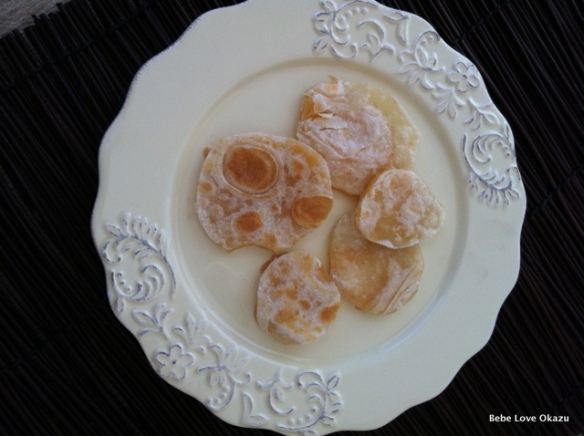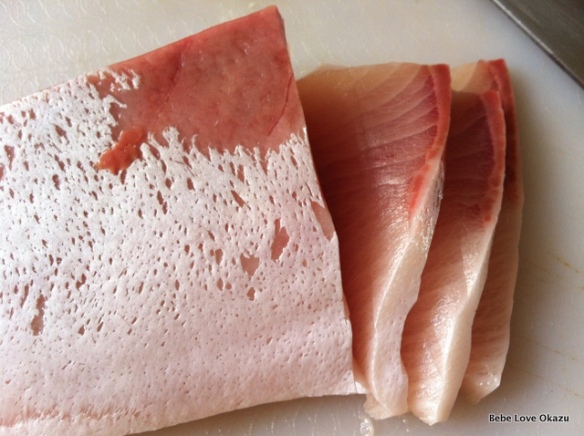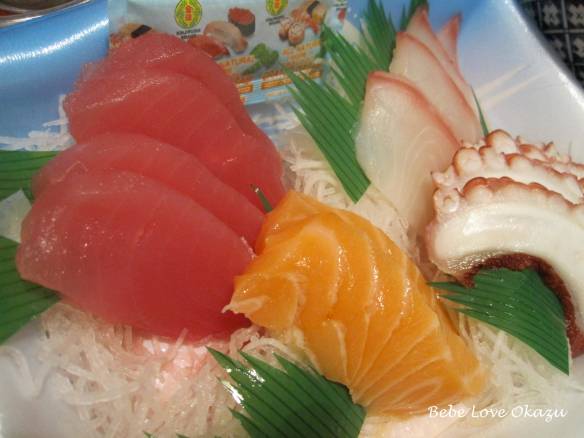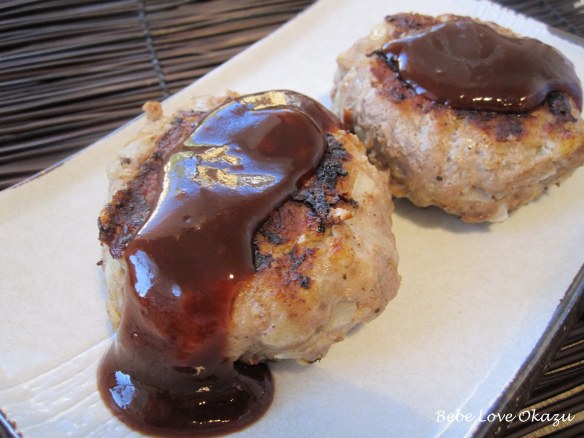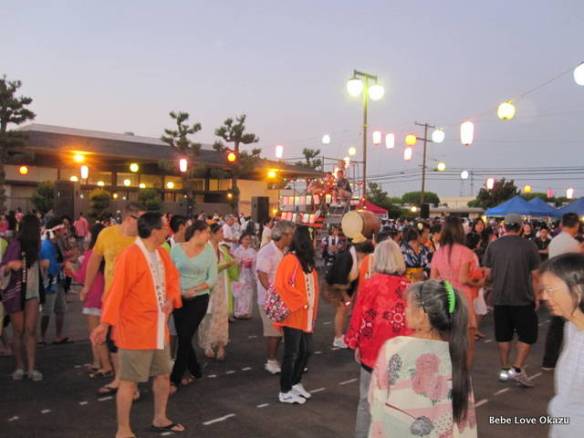
The 2012 Olympics in London have concluded. It was a GREAT two weeks! Congratulations to all the olympians. Bebe E likes to refer to the athletes as “the champions”. They most definitely are!
Just as the Olympics have come and gone, so have most all of the Obon festivals in our area, much to Bebe E’s disappointment. This past week when we were visiting my parents she asked if we had Obon practice that night. Unfortunately, our routine Obon practice came to an end and culminated in Obon odori (dancing) at the WLA Obon Festival not too long ago and we will need to wait another year before we can enjoy the festivities once again. This didn’t break her spirit however, as she occasionally still graces us with her impromptu bon dancing in the house and asks me to “sing the Obon music, Mommy” so that she can dance to it. (Photo above taken at OCBC Obon.)
I haven’t worn a yukata (Japanese summer kimono) in ages, but this year I dressed-up with Bebe E because she was so excited about Obon dancing and wearing a pretty “kimono dress”. The yukata that Bebe E is wearing is my childhood yukata that my maternal grandparents sent from Japan. My Mom told me that I never wore it. I’m SO happy that Bebe E was excited about dressing up and that she wanted to wear my “vintage” yukata. Love her!
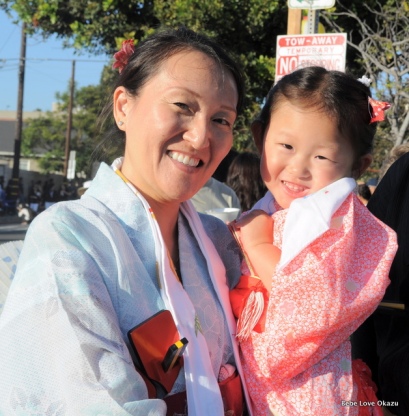
I never danced much at Obon when I was Bebe E ‘s age, nor as I got older, despite the fact that my Bachan (paternal grandmother) was an odori sensei (classical Japanese dance instructor). I was always too shy to dance in front of so many people. In high school and college my friends and I occasionally would jump into the Obon odori lanes (yes, because there are usually so many people dancing, we are required to stay in lanes) for fun, but now that I’m older, it’s important to me to share with Bebe E as much of the Japanese culture that I experienced growing-up. I’m happy she is having so much fun. Next year, we will try to attend more of our local Obon as a few of my besties and their families seem to visit quite a few over the summer. For more history about Obon, see my recipe post on Okinawa dango (Japanese donuts).
What I always loved about Obon as a child was playing the carnival type games. Bebe E is the same way. Now that I’m older, I enjoy going to eat, especially knowing that by purchasing dinner at the Obon, we’re supporting the temple.
At WLA Obon, our buddy M-kun volunteers his time and grills the beef teriyaki.
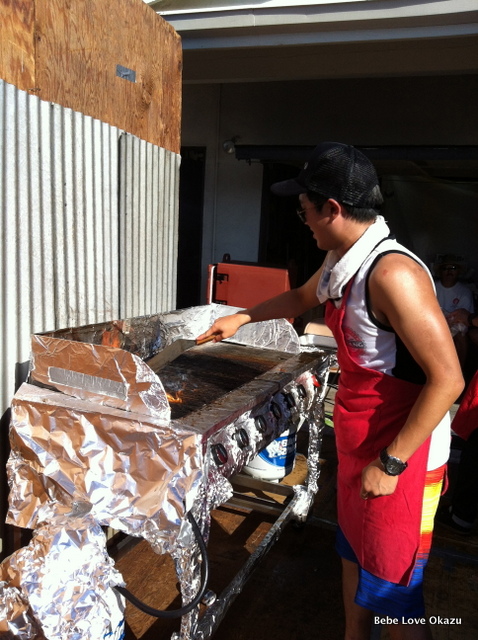
Both the beef teriyaki and chicken teriyaki plates are seasoned really well and is simply served with rice and salad.

Bebe Dada and my Mom enjoy the sushi combo with inari sushi (otherwise known as “footballs”; sushi wrapped in sweet fried bean curd) and futomaki (“fat” sushi roll stuffed with various ingredients such as egg, spinach, dried fish, and vegetables, but never includes raw fish). Unfortunately, I forgot to take photos of the sushi before we started eating.
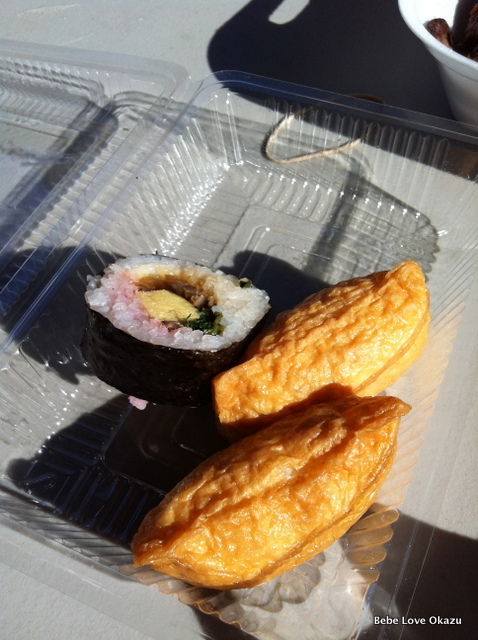
A favorite of mine are what I call Japanese wontons. These are similar to the wontons my Mom made for us growing-up, and differs slightly from the Chinese Wontons that I also love.

Unfortunately, I forgot to take a picture of one of my favorite Obon dishes at the WLA Obon, the char-siu (pork) udon. It’s flavor is reminiscent of homemade udon soup, and differs from the udon soup we have come to enjoy at some our favorite local udon and soba noodle restaurants. Oh well, I’ll try and remember to take a picture next year!
At most Obon festivals you will find Japanese taiko drum performers. I never played taiko drums, but my brother and sister-in-law were both key members of their taiko group in college and I often enjoyed their performances. If you’ve never experienced a taiko performance it’s definitely something I recommend seeing at least once. My husband and I had a small group of local taiko drummers perform at our wedding reception. We loved it!
Bebe E was fascinated watching the WLA Taiko Group perform at Obon. At first the loud and very deep sound of the drums intimidated her but she quickly relaxed as she began to enjoy the music of the amazing big drums. Next year we will need to arrive a bit earlier so we can catch the entire show.
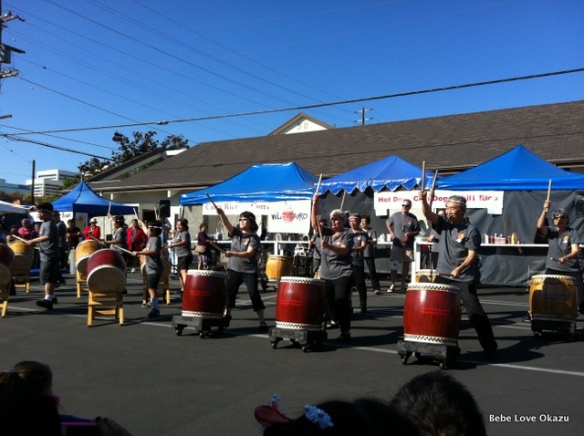
Last but not least, Bebe E was very excited about Obon dancing. After all, that’s what we practiced every week for four weeks! There she is, dancing in her lane.
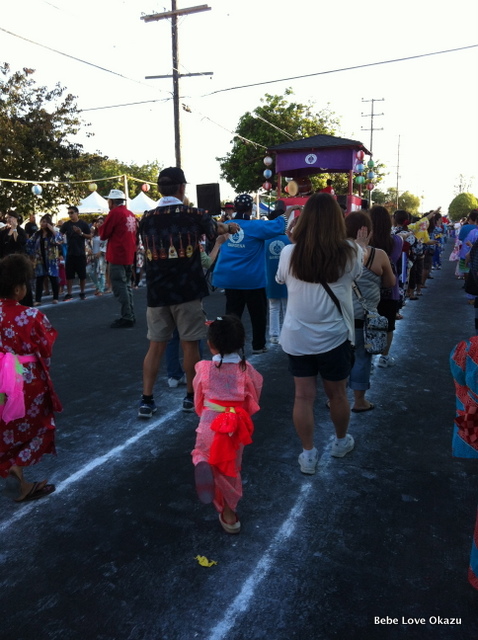 We promised Bebe E that she could try her first snow cone during the dancing intermission. After all, snow cones at Obon are a must! She asked for blue and red flavors.
We promised Bebe E that she could try her first snow cone during the dancing intermission. After all, snow cones at Obon are a must! She asked for blue and red flavors.
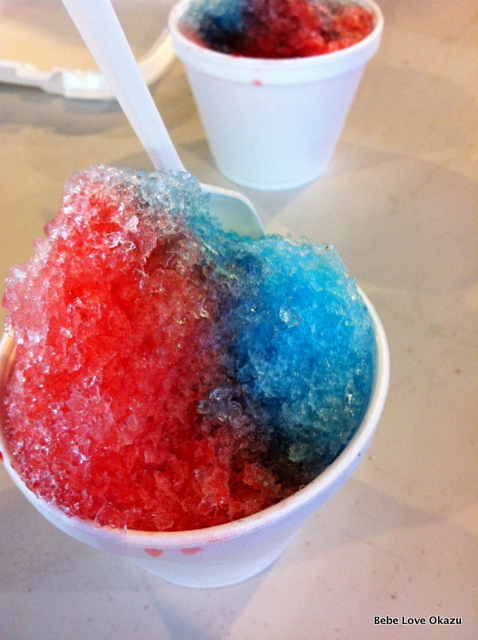
Aside from Okinawa Dango (Japanese donuts) which they haven’t sold at the WLA Obon in a few years, my favorite dessert is the imagawayaki. This is a dessert that is often found at matsuri or festivals In Japan. It is a cake-like batter that is cooked in a type of waffle iron and is traditionally filled with sweet red beans known as azuki. I’m not a big fan of azuki, so you can imagine my excitement to find imagawayaki filled with chocolate or blueberries or vanilla cream! Even better – – – ordering a chocolate chip filled imagawayaki with a scoop of vanilla ice cream on the side! It’s the best!

It was a good Obon season celebrating friends, family and loved ones.
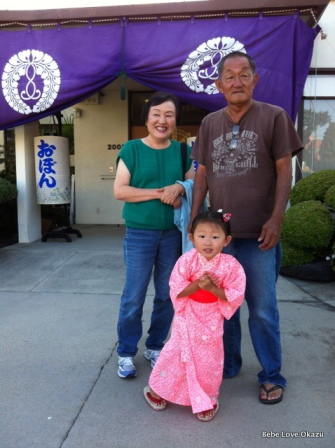
We’re looking forward to Obon odori (dancing) practice next summer!
Happy Summer!
Judy




